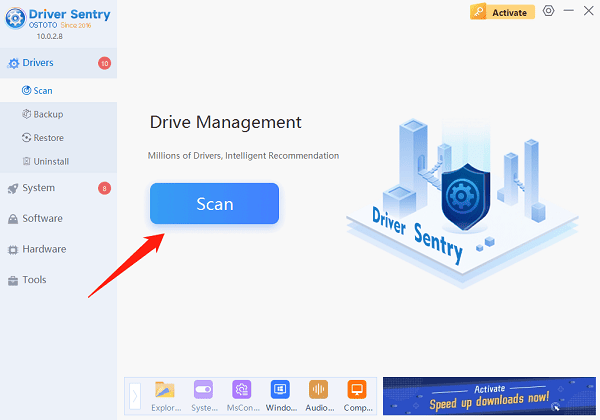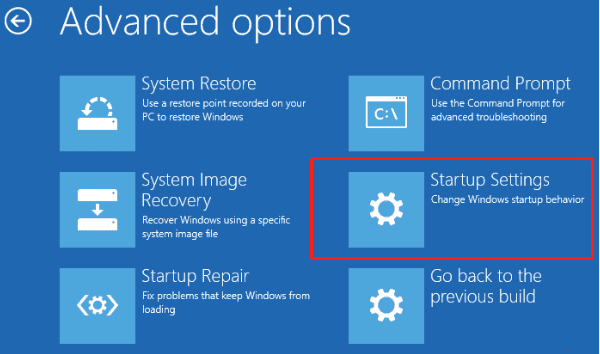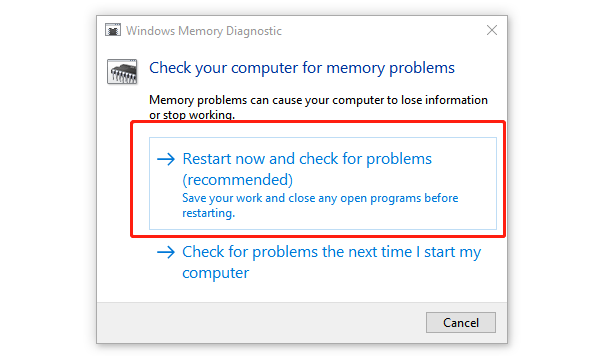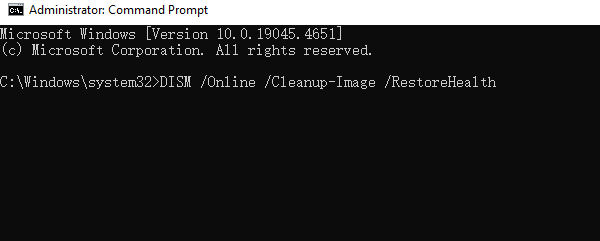
In Windows 10, you may encounter a "Critical Process Died" blue screen error that affects system performance. This article offers solutions to resolve the issue and restore normal operation.
Method 1: Update Drivers
Incompatible drivers can cause system processes to terminate unexpectedly, leading to the "Critical Process Died" error. Updating your device drivers can effectively prevent this issue. It is recommended to use Driver Sentry for automatic driver updates, saving time and avoiding errors during download or installation.
Download the latest version of Driver Sentry, install it, and open the software. Click "Scan".

After the scan, the software will display a list of drivers that are outdated or missing. Locate the drivers that need updates and click the "Upgrade" button.
Once updates are complete, restart your computer to ensure the updated drivers take effect.
Method 2: Boot into Safe Mode
Restart your computer and press and hold the power button. Repeat this process three times to trigger the recovery environment. Alternatively, insert a Windows installation media (USB or DVD) to boot the computer and select "Repair your computer" to enter the recovery environment.
In the "Choose an Option" menu, click "Troubleshoot".
Select "Advanced Options", then choose "Startup Settings".

Click "Restart", and the computer will reboot into the startup options screen.
Press 4 or F4 to boot into Safe Mode, or press 5 or F5 for Safe Mode with Networking.
Method 3: Perform Hardware Diagnostics
Check Hard Drive:
Open Command Prompt as an administrator, type the command chkdsk C: /f /r, and press Enter. This command will check and repair file system errors on the C drive.
If issues are detected, back up important data and consider replacing the hard drive.
Check Memory:
Press Win + R, type "mdsched.exe", and press Enter to open the Memory Diagnostic Tool.
Choose "Restart now and check for problems", and the system will restart to scan your memory.

If memory issues are found, consider replacing the RAM.
Method 4: Run System File Checker (SFC)
Open Command Prompt as an administrator.
Type "sfc /scannow" and press Enter.
The system will scan and repair corrupted system files, which may take several minutes.
After the scan and repair process, restart your computer to see if the issue is resolved.
Method 5: Use the DISM Tool
Open Command Prompt as an administrator.
Enter the following command and press Enter: DISM /Online /Cleanup-Image /RestoreHealth

DISM will scan and repair the system image, which may take some time. Be patient.
Once DISM completes, run "sfc /scannow" again to ensure all system files are repaired.
Restart your computer to check if the problem is fixed.
Method 6: Uninstall Recent Windows Updates
Follow the steps in Method 2 to enter the Windows recovery environment.
In the Choose an Option menu, select "Troubleshoot".
Select "Advanced Options", then choose "Uninstall Updates".
Choose to uninstall the most recent quality or feature updates.

Restart your computer and check if the issue is resolved.
Method 7: Perform a System Restore
Follow the steps in Method 2 to enter the Windows recovery environment.
In Advanced Options, select "System Restore".
Choose a restore point from before the error occurred.
Confirm the restore point, click "Next", and then select Finish to start the restoration.
After the restoration completes, the computer will restart. Check if the issue is resolved.
Method 8: Reset Your PC
Follow the steps in Method 2 to enter the Windows recovery environment.
In the "Choose an Option" menu, select "Reset this PC".
Choose either "Keep my files" or "Remove everything".
Follow the prompts to complete the reset process. This will reinstall Windows and clear potentially problematic files or settings.
After the reset, the computer will restart and complete setup. Check if the issue is resolved.
Follow these steps to troubleshoot and fix the "Critical Process Died" error in Windows 10. If the issue continues, contact technical support for help.
See also:
How to Fix Slow Printing Issues
Guide to Fixing Printer Not Printing in Color